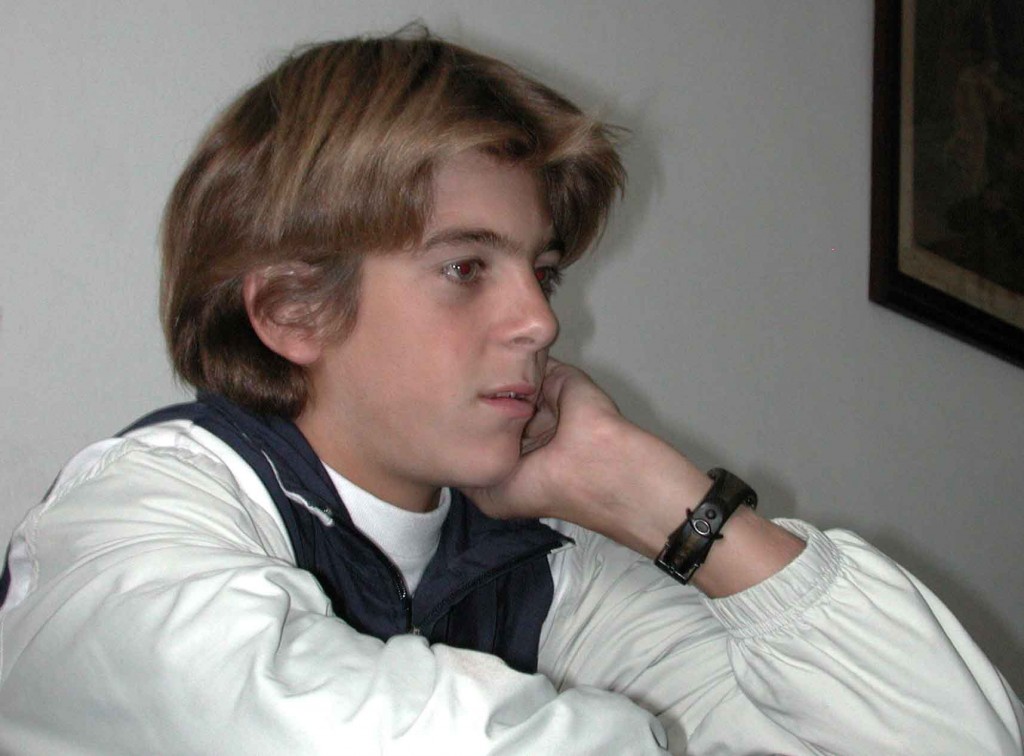Juan Martin del Potro is undoubtedly one of the most popular figures in this era of tennis. His amazing story of dedication, resilience and triumph is documented in the new book “Juan Martin del Potro: The Gentle Giant,” the first English-language book on Argentine tennis great Juan Martin del Potro, written by respected tennis writer Sebastian Torok. Available for sale and download here via amazon.com: https://www.amazon.com/dp/1937559920/ref=cm_sw_r_tw_dp_U_x_lRArEbY4VMWP3 this book tells the story of one of Argentina’s greatest tennis players and the most important of his generation.
The following is an brief excerpt from the chapter “The Initial Ascent” which discusses del Potro’s junior career, with an amazing perspective about junior tennis in Argentina and the path this talented young man took to the top of the tennis world.
Mariano Zabaleta and the Moroccan Younes El Aynaoui hit their last groundstrokes of their first practice session of the day on the hard court inside the University of Tandil’s gym. The practice was part of a demanding preseason workout preparing for the start of the ATP Tour circuit in 2000. A thin and good-looking boy observed this practice session with great attention and heard a question directed at him from Argentina’s No. 1 player.
“Do you play tennis? Do you want to rally a little?”
The boy, just 11 years old, accepted. He took a racket and started hitting the ball. He did not miss on either the forehand or the backhand. He just did not miss.
“Look at this kid, Eduardo! Look at him!” Zabaleta shouted to his coach, Eduardo Infantino. At 21 years old and ranked in the top 35 on the ATP Tour, Zabaleta worked with Infantino for several seasons and would go on to reach his best ranking of No. 21 during their partnership. Infantino, curious about what Zabaleta was saying, came to check out del Potro. Physical trainer Horacio Anselmi, who worked on many projects with Infantino, also joined. Indeed, they were in the presence of discovering a new talent.
“What’s your name?” asked Infantino.
“Juan Martín.”
“And the last name?” The coach insisted.
“Del Potro.”
The moment is a treasure in the memory for Anselmi.
“He was a boy with the characteristics of successful athletes: he was quiet, self-absorbed and introverted,” said Anselmi. “This is a norm with great individual athletes. Time went by, of course, at some point, I told him and his father that something serious had to happen for him to not reach the top 10. I also warned them that he would have to take care of certain physical aspects throughout his career, because of the fragility of some parts of his body.”
Anselmi, part of the physio staff for the Boca Juniors soccer club in Argentina for more than 30 years, said he was very impressed the first time he laid eyes on del Potro.
“From the first moment, I was really struck by his attention,” he said. “He had a coordination and concentration of another level. He was not a little boy with a fixed gaze. He was not scattered. And you do not have to be a tennis expert to realize that his shots almost always landed in the same part of the court. His strokes sounded clean and he moved towards the ball without waiting for it. His feet were extremely large for his age and yet he was not clumsy.”
While going through that stage of training, del Potro underwent some tests of endurance with Anselmi, who, later in 2006, would be his official physical trainer when Infantino became the young player’s coach. Anselmi followed the same routine when evaluating these young athletes: making them throw stones.
“It was one of the tools that I used,” he said. “And obviously, Juan Martín sent the other athletes to the hill of the devil. That is a characteristic of great athletes. I remember telling him that I liked fishing and that he would probably throw the rod too far. He threw those stones 50 percent farther than the rest. That spoke to his coordination and his power. When someone is good at throwing stones, as an athlete the talent is clear and it is a check payable to the bearer.”

